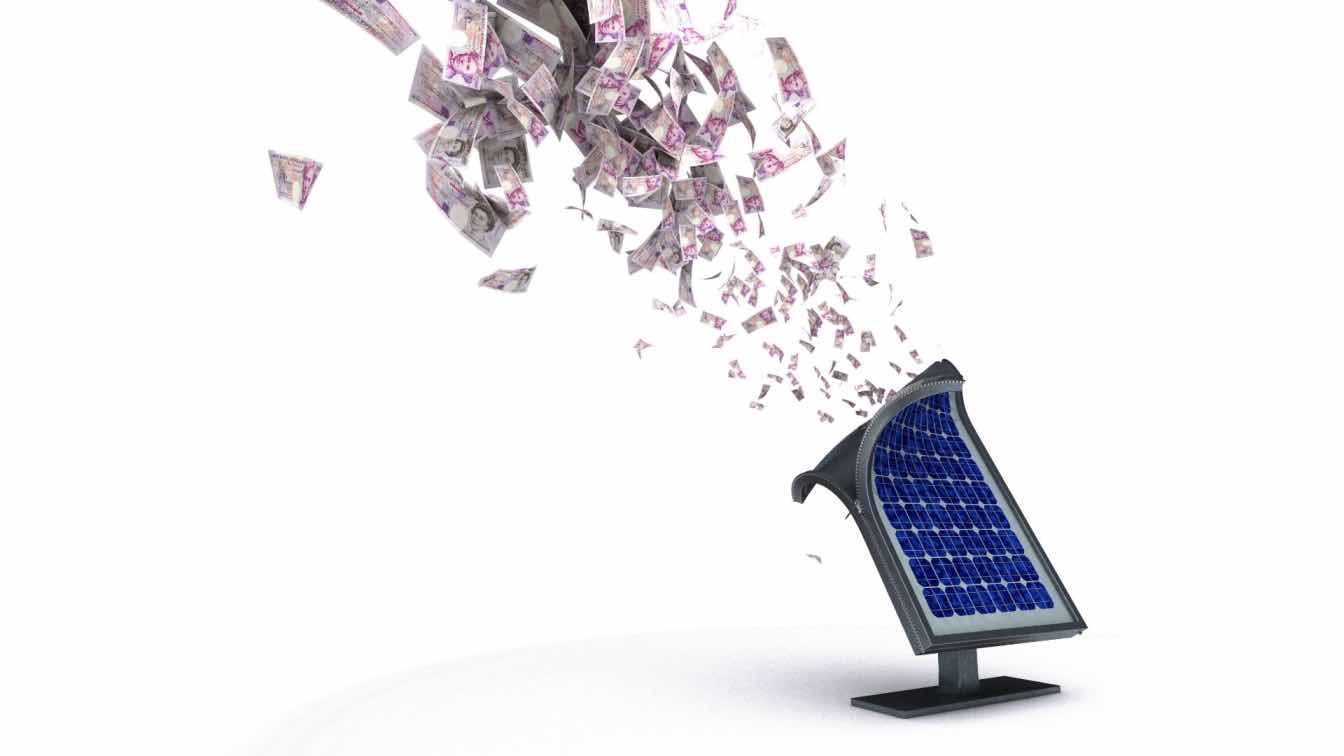Going solar can be one awesome way to lower your environmental impact while also reducing electricity costs. Who wouldn't love powering their home with free, clean energy from the sun while also slashing those high utility bills? Unfortunately, the initial cost of installing solar panels means many homeowners can't take advantage of renewable energy. This is why solar incentives matter - they help make solar financially accessible for more people! The good news? There are still plenty of solar incentives for Washington state and beyond to help cut costs. Take a look at what solar perks you can take advantage of in 2023 and beyond.
Types of Solar Incentives
Before diving into the incentives, it helps to understand the different types out there. Solar incentives generally fall into three buckets - tax credits/breaks, cash rebates, and performance-based payouts.
Federal and State Tax Credits
The most popular solar incentive is the federal solar tax credit, also called the investment tax credit (ITC). This lets you deduct 26-30% of your total solar installation costs from your federal income taxes. Pretty sweet deal! Many states additionally offer their own solar tax credits, which you can "stack" on top of the federal credit to maximize savings.
Cash Rebates
What's better than a discount on taxes? Cash! Some states, utilities, cities, and even solar companies offer upfront cash rebates when installing solar panels. Rebates directly take dollars off the final price tag. In 2023, rebates range anywhere from a couple hundred bucks to over $1,000+ in some cases.
Performance-Based Incentives
Rather than one-time savings, performance-based incentives reward you over time for the clean solar energy produced. For example, some states issue Solar Renewable Energy Certificates (SRECs) which can be sold for cash, earning you extra income for years after going solar. Other programs directly pay you for every kilowatt-hour (kWh) your solar panels generate.
Best States for Solar Incentives
Clearly, not all states are equal when it comes to solar incentives. Based on expert assessments of available tax credits, rebates, and other solar policies, these states offer some of the best savings opportunities:
New York
New York offers homeowners access to quite the solar incentive blend - property tax exemptions, state tax credits up to $5,000, cash rebates, low-cost solar loans, and extra local incentives. Their net metering policy is strong too.
Massachusetts
Bay Staters can tap into federal tax credits, state personal tax credits up to $1,000, solar renewable energy certificates, robust net metering, property tax exemptions, and even special local rebate programs.
Maryland
Maryland residents benefit from federal + state tax credits, energy storage rebates, property tax exemptions, and a fantastic net metering program - one of the best in the whole country.
Oregon
Oregonians can take advantage of the federal credit along with lucrative state cash rebates for solar+storage systems. Sales tax exemptions and net metering round out the savings.
Illinois
While Illinois lacks a state tax credit, homeowners access property tax exemptions, discounted solar financing programs, and a top-tier net metering policy. Greater Chicago also has excellent local solar incentives.
Changes Under the Inflation Reduction Act
Perhaps the most impactful policy change in the last decade happened with the passage of the Inflation Reduction Act in 2022. Not only did it boost the federal solar tax credit back to 30% after it had stepped down to 26%, but the credit was also extended out to 2034! Huge win for solar energy. On top of that, a brand new 30% tax credit was introduced for adding solar battery storage.
These changes keep solar incentives strong nationwide for years to come. Based on expert projections, the extended federal credit will lead to 40% more renewable energy capacity growth by 2030. For homeowners looking to secure savings, now is an excellent time to go solar before incentives reduce again.
Who Qualifies for Solar Incentives?
When it comes to claiming solar tax credits and incentives, not all homeowners may be eligible. Here are some key qualifying factors:
Your Location - Incentives can vary tremendously depending on where you live, down to even just what county or utility service area. Always verify what's offered in your area first.
System Ownership - For federal and state tax credits, you must own your solar panel system outright, not lease or enter a power purchase agreement where you pay a solar company for the power produced.
Income Level - Some incentives like solar loans and grants specifically target low-to-moderate income households to help increase solar accessibility.
Tax Liability - If you don't pay much in income taxes annually, credits become less valuable as they can't exceed what you owe. Leasing solar may work better in those cases.
Thankfully there are still choices. If tax credits don't work for you, explore options like solar leases/PPAs, low-income grants, or community solar subscriptions to make renewable energy affordable.
How To Claim Solar Incentives
Wondering how you actually secure those sweet solar incentives? Here's a quick walkthrough:
Research Available Incentives - First, use online databases to identify what federal, state, utility, and local solar programs you can access based on your location. Determining eligibility is key.
Understand Requirements - Do you need to buy vs lease a system? Does it only apply to the solar portion or can you include battery storage? Know the fine print.
Install Solar - Work with a trustworthy local solar company to customize your system and make sure you meet any incentive criteria from the get-go.
Provide Paperwork - After everything's set up, you'll submit applications and documentation to claim tax credits, rebates, etc. Solar installers typically help guide customers through this process from start to finish.
Get Paid! - Finally, enjoy your incentives and savings for years to come! Performance payments take longer as they pay you gradually over time, but tax credits and upfront rebates come quicker.
Stack savings opportunities whenever possible for maximum solar benefits. For instance, combine the 30% federal tax credit with state tax breaks, utility rebates, and property tax exclusions. Solar installations will also boost your home’s value. It all adds up!
The 6 Best Types of Solar Incentives Available
The guide has talked generally about solar incentives, now explore the most impactful options out there right now for savvy homeowners in more detail:
Federal Solar Tax Credit
The most lucrative solar incentive homeowners can utilize is the federal Investment Tax Credit (ITC), which offers a dollar-for-dollar reduction in your income tax liability equal to 26-30% of your solar installation cost.
State Income Tax Credits
Over 25 states offer an additional state tax credit for going solar, ranging from $500 up to thousands. For example, Massachusetts offers a credit up to $1,000 or 15% of project costs.
Rebates
Solar rebates directly take dollars off your final system price before or soon after installation. Utility companies, solar manufacturers, and state/local governments offer rebates as high as $1,000-$2,000+ in some cases.
Net Metering
This incentive credits you at full retail electricity rates for excess solar energy fed back to the grid, saving solar owners tons over decades. It lets your solar panels "spin the meter backwards" when generating extra power.
Solar Renewable Energy Certificates (SRECs)
For solar owners in eligible states, you can earn tradable certificates for the renewable energy you produce. Utility companies then purchase these for compliance purposes, earning you added income.
Property Tax Exemptions
Thirty-six states prevent home value increases due to solar installs from raising property tax burdens. This exemption keeps annual ownership costs lower over time.
Solar Loans and Financing Options to Know About
Since solar systems can still cost anywhere from $10,000-$30,000 out of pocket even after incentives, many homeowners turn to loans or financing agreements to cover the bill instead of paying cash.
Secured vs. Unsecured Solar Loans
Secured solar loans require an asset like your home as collateral and feature lower interest rates. Unsecured loans don’t require collateral but have higher rates. Both allow you to finance solar over 10-25 years.
Solar Leases and Power Purchase Agreements
Solar leases let you pay a solar company set monthly payments to essentially “rent” a system they install and own. PPAs work similarly, charging a rate per solar kilowatt-hour produced each month over a long-term contract.
PACE Financing Programs
Property Assessed Clean Energy programs help qualified homeowners afford solar via equitable loan terms, making payments through property taxes for up to 30 years in some cases. These innovations make green upgrades more accessible.
What Does the Future Hold for Solar Incentives?
While the recently renewed federal investment tax credit keeps nationwide solar incentives strong over the next decade, some state and local policies remain in flux. For example, California and other states are making net metering less financially favorable for solar customers - though credits are still better than no credits.
On the flip side, solar incentives also have room to become even MORE robust in coming years if governments make fighting climate change more of a priority. Some federal legislators have proposed bumping the ITC up to 50%. More states might introduce rebates, raise tax credit caps, or make solar more accessible for low-income residents.
In short, incentives can always change depending on shifting political winds. But what remains constant is solar's incredible ability to empower homeowners, save money on bills, and reduce environmental impact. That makes going solar a winning long-term investment even as policies evolve.
Closing Remarks
Solar incentives and rebates remain widely available across much of the U.S. for homeowners in 2023. Thanks to the recently extended federal tax credit, there's an extra 5+ years to capitalize on 30% savings nationwide. Stack this with other incentives like state tax rebates, utility rebates, and property tax exemptions based on where you live to maximize value.
While solar already yields a positive long-term return-on-investment from energy savings alone, incentives give your payback period a nice boost. If you've been debating whether 2023 is the year for you to go solar, there's never been a better time thanks to regulatory support. Start exploring your options!





